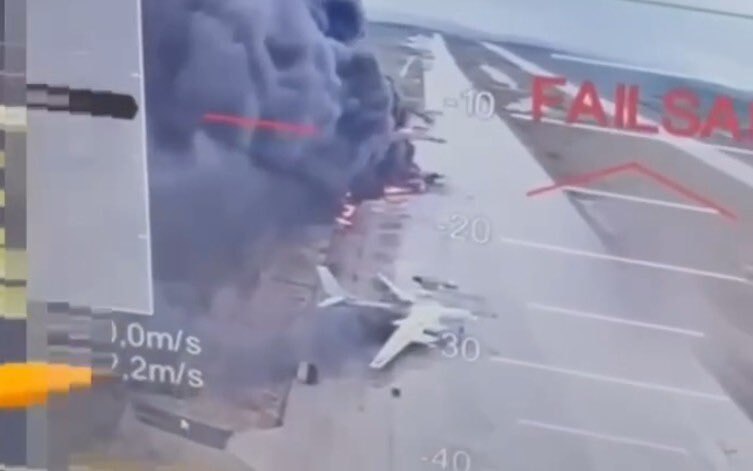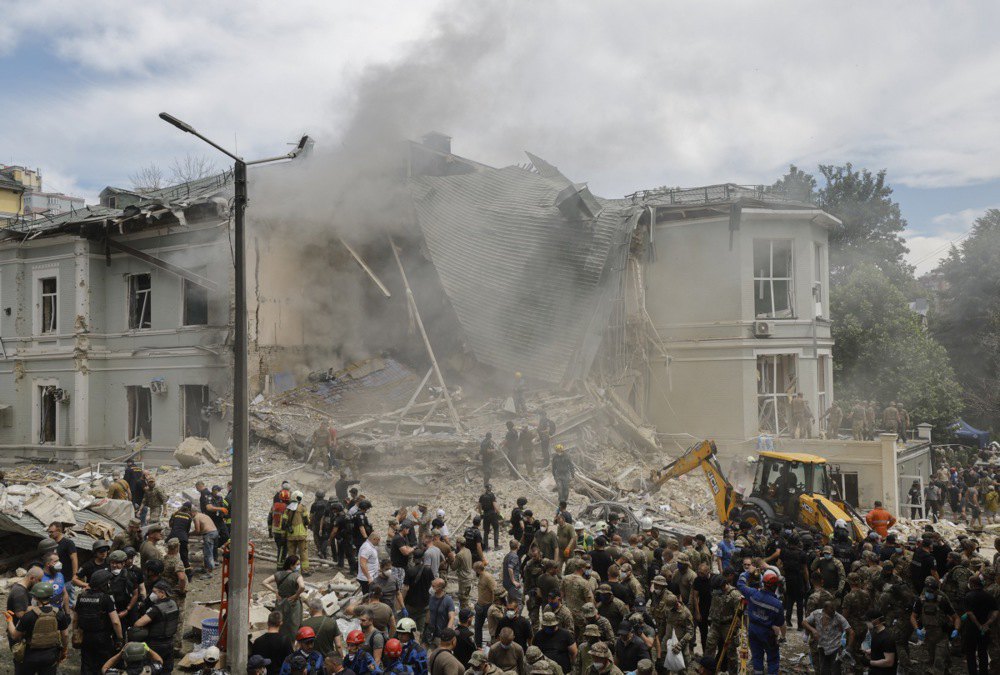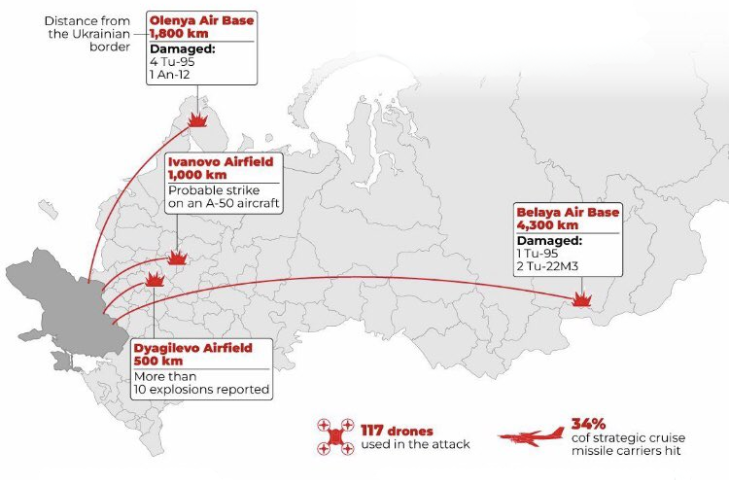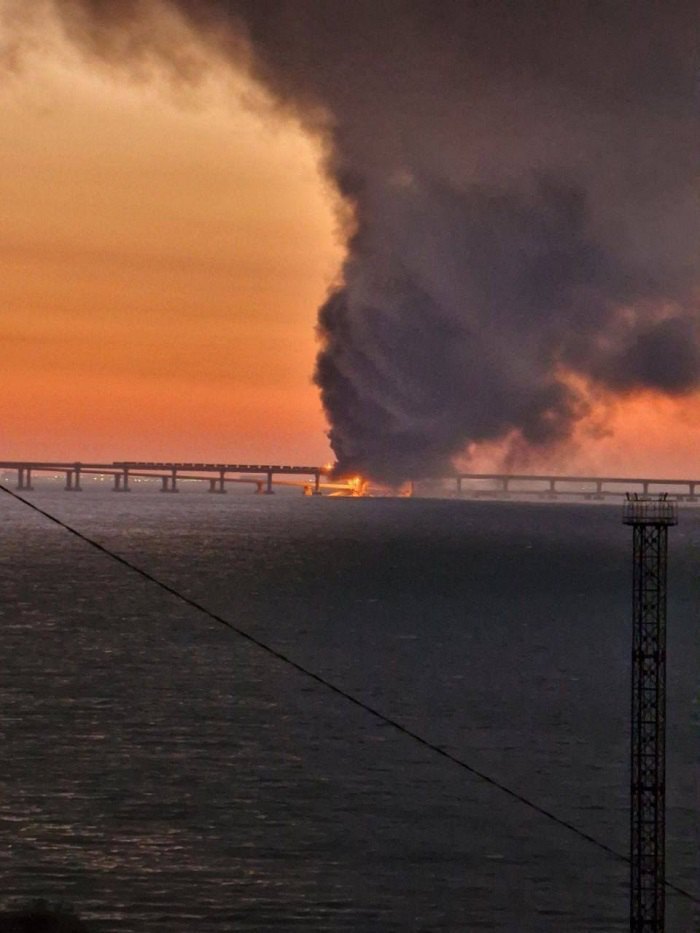
On 24 February 2022, these bombers launched missiles in an attempt to catch Ukrainian Armed Forces aircraft on the ground and to suppress Ukrainian air defences.
This attack occurred unexpectedly – without a declaration of war and following public statements that the operation was merely a drill. Do you recall how captured Russian soldiers, during interrogations, claimed they were simply en route to training exercises?
Russian military bloggers, including navigator Ilya Tumanov – better known under the pseudonym “Fighterbomber” – enthusiastically proclaimed that the Russian Aerospace Forces (VKS) had successfully achieved their objectives, nearly defeating the Ukrainian Armed Forces by disabling communications, headquarters, radars and missile launch systems.
But the plan failed. It simply failed. The aviation units were withdrawn, and the air defence systems relocated to reserve positions – albeit not without losses.
Subsequently, Russia’s strategic bombers targeted bridges and railway infrastructure. Dozens of missiles were fired at the bridge in Zatoka, and at least three waves of precision-guided missiles were launched at the railway bridge in Cherkasy. These strikes yielded no strategic gain.
For three years, long-range aviation pilots have been firing anti-ship missiles with an accuracy of plus or minus a block, demolishing entrances and shopping centres, targeting household chemicals and hitting civilian targets in Ukrainian cities.

The same aircraft were later used to strike thermal power plants and power stations during winter – damaging engine rooms at hydroelectric plants, attempting to deprive residential areas of heat, and ultimately causing the deaths of hundreds of Ukrainian civilians.
In response, Ukraine deployed long-range drones, conducted acts of sabotage, and eliminated several of these aircraft directly in their parking areas. This was an unprecedented development in modern military history.
Afterwards, Russia’s long-range aviation was relocated several thousand kilometres away from Ukraine and acquired so-called “tactical tyres”.

This is the Kremlin’s peculiar innovation: shielding components of its nuclear triad with embankments and rubber tyres.
Once the strategic bombers had been redeployed to Olenya in Murmansk Region – 2,000 kilometres from Ukraine – and Belaya in Irkutsk Region – 4,000 kilometres away – Russian forces installed air defence systems, launched electronic warfare measures, formed mobile response units and began constructing defensive embankments. And it was at this point that, according to Russian liberals now residing in the European Union, “Pearl Harbor” allegedly took place.
In other words, these commentators equated the destruction of Russian aircraft to the Japanese strike on the American naval base early on a Sunday morning – a time when a radar operator famously mistook approaching aircraft for a flock of birds, assuming that no hostile force could possibly be operating in such proximity to a U.S. military installation.
It is difficult to read such comparisons without concluding they are detached from reality.
Anyone equating Operation Spider’s Web with Pearl Harbor is either fundamentally uninformed, heavily influenced by Hollywood narratives, or deliberately producing sponsored content to promote the idea that Russia will now rally and triumph as the United States did following the 1941 attack.
No – this was not Pearl Harbor.
What occurred was that a country without strategic aviation, without an integrated air defence network, and without modern aircraft, managed to force the strategic aviation of its adversary to retreat far beyond its own borders – and continues to destroy it 4,000 kilometres away.

It is overcoming multi-layered air defence systems despite their geographic dispersal and elevated state of readiness.
The “June Chainsaw Massacre”? Yes. Pearl Harbor? Hardly.
As of today, according to objective satellite and radar surveillance, 12 aircraft have been confirmed destroyed.
At Olenya: at least four Tu-95MS bombers and an An-12 transport aircraft.
At Belaya: four Tu-95MS bombers and four Tu-22M3 long-range strike bombers.
There is currently cloud cover and haze over the bases in central Russia – more information will become available in due course. At present, it is likely that these bases are undergoing frantic clean-up efforts: wrecked aircraft are being removed, and the evidence of fires is being concealed.
There are unconfirmed reports that two A-50 “flying radar” aircraft have been recovered. If verified, this development suggests that Ukraine is approaching parity with Russia in terms of airborne early warning and control (AEW&C) capabilities.
Nonetheless, every Russian aviation loss is of enormous strategic value. Russia is not engaged in mass production of aircraft, and each destroyed bomber represents one fewer platform capable of launching cruise missiles against Ukraine. Given the increasing investment by Western partners in Ukraine’s defence industrial base, any reduction in incoming missile threats is significant.
If Russia was preparing for a 20-year war – as in the era of the Great Northern War – it may now have the opportunity to do so. However, that timeline will be spent rebuilding long-range aviation from near ruin.
Ukraine’s special services have already carried out two successful attacks on the Crimean Bridge.

They have eliminated generals responsible for war crimes – including the use of chemical munitions and the orchestration of airstrikes – inside Moscow itself.
Ukrainian forces landed twice on Zmiyinyy Island, engaging in close-quarters combat under the most challenging conditions, amid mine-laden beaches. The Russian garrison was forced to evacuate – suffering the loss of a dozen boats, two Pantsir systems, two naval vessels and a helicopter.
This operation secured the safety of Odesa and shifted the theatre of conflict toward the Crimean coast, where Ukraine’s Security Service (SBU) and Defence Intelligence of Ukraine (DIU) destroyed dozens of enemy boats and ships using drones.
For the first time in history, Ukraine has downed multiple helicopters using Magura and two fixed-wing aircraft using unmanned naval platforms.

Now, at distances of 2,000 and 4,000 kilometres, Ukrainian forces – remotely and with the support of AI-powered drones – have eliminated a key component of the Russian Federation’s long-range aviation. The intensity and effectiveness of the strikes suggest that Russia had been preparing for a renewed offensive on Ukrainian territory.
In response, FSB operatives will likely stage a symbolic Geländewagen race and enlist marginalised individuals to set fire to Ukrainian military vehicles.
Ukraine is fighting to survive – to defend its way of life. Russia is fighting to parade its power and recreate a Soviet empire. The motivations are fundamentally different – and so are the outcomes.







